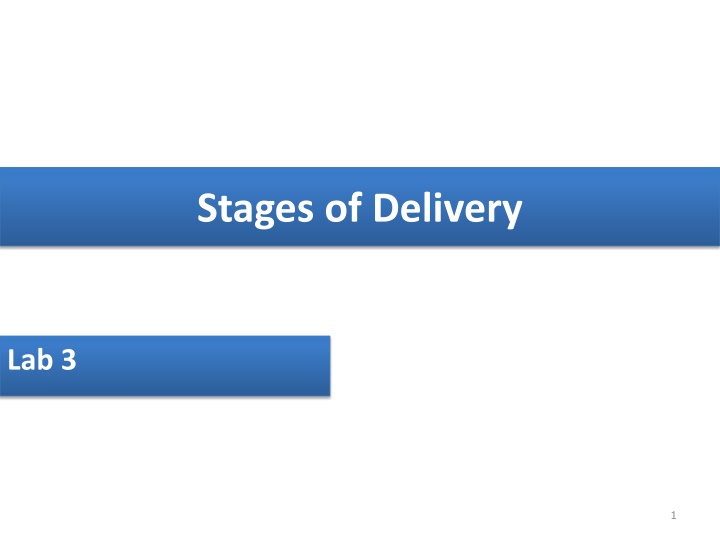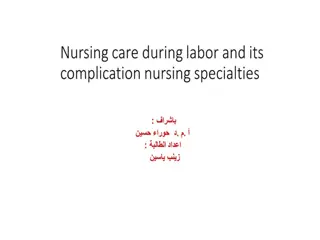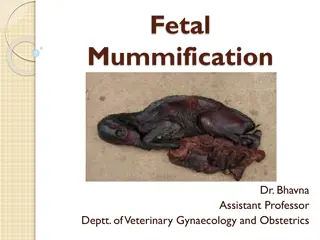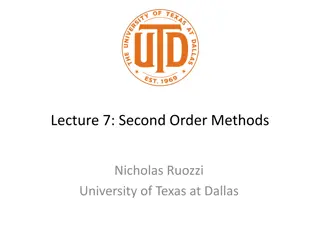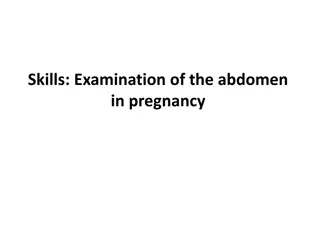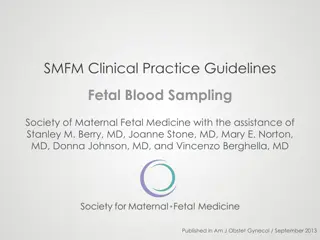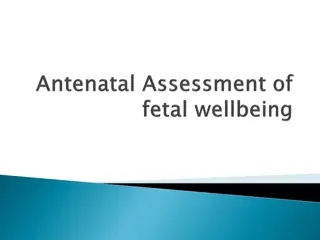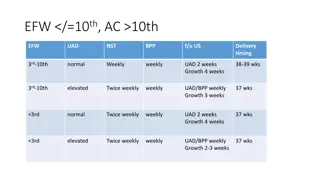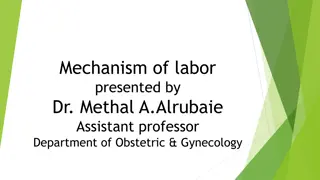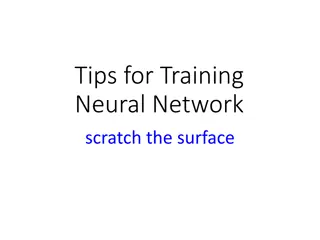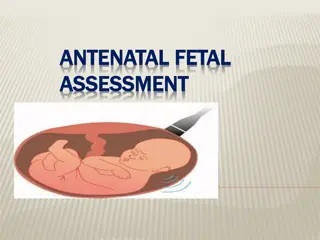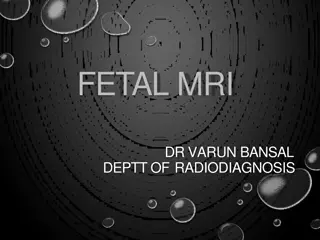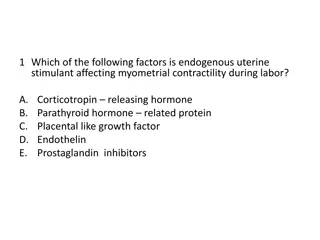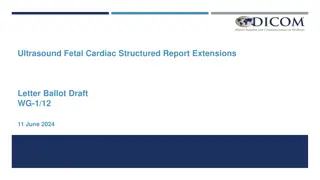Stages of Delivery Process and Fetal Descent
The journey of childbirth is a unique experience with various stages, including fetal descent stations, cervical effacement, and true vs. false labor contractions. Understanding these processes can help expectant parents prepare for the arrival of their little one.
Uploaded on May 01, 2025 | 3 Views
Download Presentation

Please find below an Image/Link to download the presentation.
The content on the website is provided AS IS for your information and personal use only. It may not be sold, licensed, or shared on other websites without obtaining consent from the author.If you encounter any issues during the download, it is possible that the publisher has removed the file from their server.
You are allowed to download the files provided on this website for personal or commercial use, subject to the condition that they are used lawfully. All files are the property of their respective owners.
The content on the website is provided AS IS for your information and personal use only. It may not be sold, licensed, or shared on other websites without obtaining consent from the author.
E N D
Presentation Transcript
Stages of Delivery Lab 3 1
Introduction The birth of child is a special and unique experience. No two deliveries are identical, and there is no way to predict how specific delivery is going to go. However, we can know the stages of the birth process and what to generally expect. 2
Definition delivery is the physiologic process by which a fetus is expelled from the uterus to the outside world. For 9 months, the unborn child has been developing in the womb. Now the baby is ready to make an exit. 3
Fetal Descent Stations . Measured in neg. & pos. numbers. (Centimeters) The ischial spine is in (0) Station If the presenting part is higher than the ischial spine, the station has a (-) neg. Positive = presenting part has passed the ischial spine. Positive (+) 4 is at the outlet. 4
Cervical Effacement and Dilatation Photo Sharing and Video Hosting at Photobucket Cervical Effacement: the progressive shortening and thinning of the cervix during labor. 0 100% Cervical Dilatation: the increase in diameter of the cervical opening measured in centimeters. 0 10 cm. 5
True and False Labor Contractions True Labor False Labor Result in progressive cervical dilation Do not result in progressive cervical dilation Occur at regular intervals Occur at irregular intervals Interval between contractions decreases Interval between contractions remains the same or increases Frequency, duration, and intensity increase Intensity decreases or remains the same Located mainly in back and abdomen Located mainly in lower abdomen and groin Generally intensified by walking Generally unaffected by walking Not easily disrupted by medications Generally relieved by mild sedation 6
True and False Labor Contractions True Labor False Labor Result in progressive cervical dilation Do not result in progressive cervical dilation Occur at regular intervals Occur at irregular intervals Interval between contractions decreases Interval between contractions remains the same or increases Frequency, duration, and intensity increase Intensity decreases or remains the same Located mainly in back and abdomen Located mainly in lower abdomen and groin Generally intensified by walking Generally unaffected by walking Not easily disrupted by medications Generally relieved by mild sedation 7
Stages of Labor First stage: early, active, transition Dilatation Second stage Pushing and birth Third stage Delivery of placenta Fourth stage Postpartum 8
Dilation from 0 to 10 cm. Begins with the first true labor contractions and ends with complete effacement and dilation of the cervix (10 cm dilation). The first stage of labor averages about 13 hours for a nullipara and about 7 hours for a multipara. It has three phases: 1- Latent or Early 2- Active 3 - Panting or transition 9
What woman do? Dilates from 0 to 3 cm. During this phase just try to relax. It is not necessary to rush to the hospital. If early labor occurs during the day, do some simple routines around. Keep yourself occupied while conserving your energy. Drink plenty of water and eat small snacks. 10
What to expect: Early labor will last approximately 8-12 hours cervix will efface and dilate to 3 cm Contractions will last about 30-45 seconds, giving you 5-30 minutes of rest between contractions Contractions are typically mild and somewhat irregular, but become progressively stronger and more frequent Contractions can feel like aching in lower back, menstrual cramps, and pressure/tightening in the pelvic area Amniotic sac rupture and can happen any time within the first stage of labor 11
Maintaining Nutrition and Hydration Provide clear liquids and ice chips as allowed. Administer I.V. fluids as indicated. Relieving Anxiety Establish a relationship with the woman/support persons. Provide information on the health care facility's policies and procedures. Inform the woman of maternal status and fetal status and labor progress. Explain all procedures and equipment used during labor. Answer any questions the woman has. Review the birth plan and make appropriate revisions. Monitor maternal vital signs. Remember the individual patient condition is used to determine frequency of vital signs and FHR assessment. 12
Controlling Pain Encourage ambulation as tolerated regardless of membrane status as long as presenting part is engaged. Encourage diversional activities, such as reading, talking, watching TV, playing cards, listening to music. Review, evaluate, and teach proper breathing techniques. Encourage a warm shower. Encourage relaxation techniques. Provide comfort measures. 13
Active Labor Phase Active labor will last about 3-5 hours cervix will dilate from 4cm to 7cm Contractions during this phase will last about 45-60 seconds with 3-5 minutes rest in between Contractions will feel stronger and longer This is usually the time to head to the hospital 14
Nursing intervention start breathing techniques and try a few relaxation exercises between contractions. Give the mother undivided attention Offer her verbal reassurance and encouragement Massage her abdomen and lower back Keep track of the contractions (if she is being monitored, find out how the machine works) Help make her comfortable (prop pillows, get her water, apply touch) Remind her to change positions frequently (go with her on a walk or offer her a bath) Provide distractions from labor such as watching TV, reading a book. 15
Transition Phase Transition will last about 30 min-2 hrs cervix will dilate from 8cm to 10cm Contractions during this phase will last about 60- 90 seconds with a 30 second-2 minute rest in between Contractions are long, strong, intense, and can overlap This is the hardest phase but also the shortest might experience hot flashes, chills, nausea, vomiting. 16
Nursing intervention Offer lots of encouragement and praise Encourage breathing Encourage her to relax between contractions. Don t think that there is something wrong if she seems to be angry it is a normal part of transition Relieving Anxiety Monitor vital sign 17
Nursing intervention Evaluate FHR Minimizing Pain Assist with preparation for analgesia and anesthesia Monitor the woman's blood pressure, pulse, and respiratory rate after initiation of anesthesia. Assess neonate for effects of maternal anesthesia. 18
Second stage The second stage can last from 20 minutes to 2 hours. Contractions will last about 45-90 seconds at intervals of 3-5 minutes of rest in between. Woman has a strong natural urge to push and strong pressure at rectum. Your baby s head will eventually crown (become visible). You will feel a burning sensation during crowning. During crowning you will be told by your health care provider to not push. 19
Nursing intervention Relax your pelvic floor and anal area (Kegel exercises can help). Minimizing Fear and Anxiety Monitor maternal vital signs. Monitor FHR Keep the woman informed of her status. Help her to relax and be as comfortable as possible. Give her ice chips if available and provide physical support in her position. Encourage, encourage, encourage! Preventing Infection and Promoting Safety 20
What baby is doing baby s head will turn to one side and the chin will automatically rest on the chest so that the back of the head can lead the way. Once baby s head is out, the head and shoulders will again turn to face side, allowing baby to easily slip out. 21
Third stage The third stage is the delivery of the placenta and is the shortest stage. The time it takes to deliver the placenta can range from 5 to 30 minutes. Three signs of placental separation: Lengthening of umbilical cord Gush of blood Fundus becomes globular. 23
Third stage After the delivery of baby, the nurse will be looking for small contractions to begin again. The contractions signal that placenta is separating from the uterine wall and is ready to be delivered. Pressure may be applied by massage to your uterus and the umbilical cord may be gently pulled. The woman might experience some severe shaking and shivering after your placenta is delivered. This is a common symptom and not a cause for concern. 24
Nursing intervention Preventing Hemorrhage Ensure accurate measurement of intake and output maintained throughout labor and delivery. Administer oxytocin (Pitocin 10 to 40 units/L at 100 mU/min) either I.V. or I.M. as directed by facility policy and provider. Uterine massage 25
The End 26
